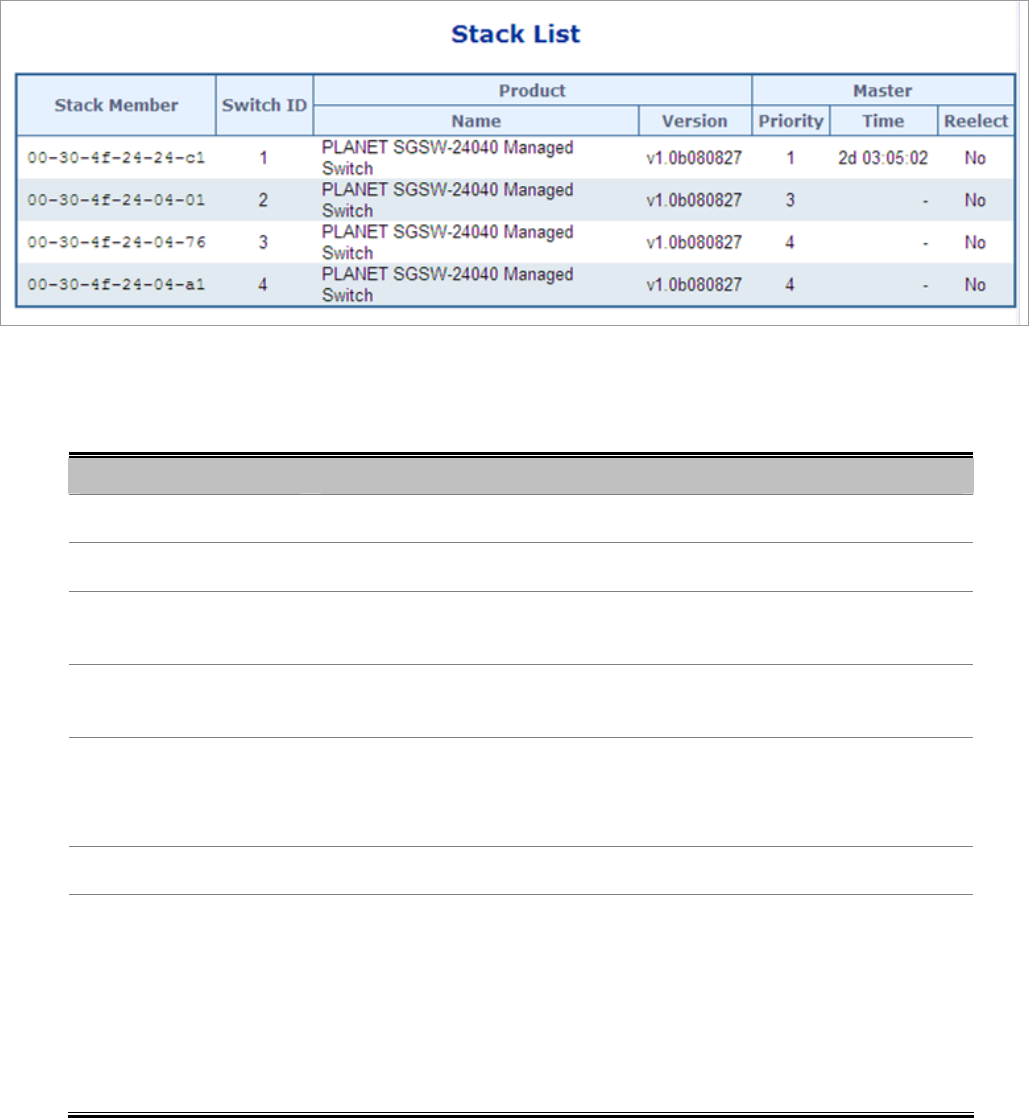Manual
Table Of Contents
- 1. INTRODUTION
- 2. INSTALLATION
- 3. SWITCH MANAGEMENT
- 4. WEB CONFIGURATION
- 4.1 Main WEB PAGE
- 4.2 System
- 4.3 Simple Network Management Protocol
- 4.4 Port Management
- 4.5 Link Aggregation
- 4.6 VLAN
- 4.7 Rapid Spanning Tree Protocol
- 4.8 Quality of Service
- 4.9 Multicast
- 4.10 IEEE 802.1X Network Access Control
- 4.10.1 Understanding IEEE 802.1X Port-Based Authentication
- 4.10.2 802.1X System Configuration
- 4.10.3 802.1X and MAC-Based Authentication Port Configuration
- 4.10.4 802.1X Port Status
- 4.10.5 802.1X and MAC-Based Authentication Statistics
- 4.10.6 Windows Platform RADIUS Server Configuration
- 4.10.7 802.1X Client Configuration
- 4.11 Access Control Lists
- 4.12 Address Table
- 4.13 Port Security (To be Continued)
- 4.14 LLDP
- 4.15 Network Diagnastics
- 4.16 Stacking – SGSW-24040 / SGSW-24040R
- 4.17 Power over Ethernet (SGSW-24040P / SGSW-24040P4)
- 5. COMMAND LINE INTERFACE
- 6. Command Line Mode
- 6.1 System Command
- 6.2 Port Management Command
- 6.3 Link Aggregation Command
- 6.4 VLAN Configuration Command
- 6.5 Spanning Tree Protocol Command
- 6.6 Multicast Configuration Command
- 6.7 Quality of Service Command
- 6.8 802.1x Port Access Control Command
- 6.9 Access Control List Command
- 6.10 MAC Address Table Command
- 6.11 LLDP Command
- 6.12 Stack Management Command
- 6.13 Power over Ethernet Command
- 7. SWITCH OPERATION
- 8. POWER OVER ETHERNET OVERVIEW
- 9. TROUBLE SHOOTING
- APPENDEX A
- APPENDEX B : GLOSSARY

User’s Manual of WGSW-24040 Series
SGSW-24040/24240 Series
206
Figure 4-16-8 Stack Information page screenshot - Stack List
The page includes the following fields:
Object Description
• Delete
Deletes this switch from the stack configuration.
• Stack Member
The MAC address of the switch.
• Switch ID
The Switch ID (1-16) assigned to a switch. For more information, see description
of Switch IDs
• Master Capable
Indicates whether a switch is capable of being master. An unmanaged switch, for
example, will not be Master Capable.
• Master Priority
The priority that the switch has in the master election process.
The smaller the priority, the more likely the switch will become master during the
master election process.
• Switch Type
The product name of the switch.
• Start Master Election
By checking this option, the "Save" operation will also start the master election
process.
This is done by clicking "Start Master Election", followed by "Save". This causes
the first two criteria to be ignored, thereby basing master election only on master
priority and MAC address. When master election is enforced, the first two criteria
are ignored for a period of 10-15 seconds.
Master Forwarding Table
As the heading suggests, the information in the table is as seen from the master view.
For each switch in the stack, the following information is shown:
• The MAC address, switch ID, distance information, and the primary forwarding path to the switch.
• For ring topology, a backup path is also provided.










